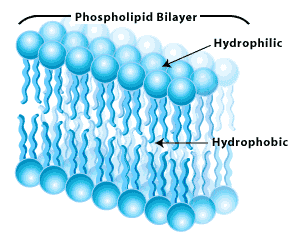
Archaebacteria: Single celled Microorganisms that are somehwat similiar to bacteria in terms of size and the simplicity of its structure but completely different when it comes to molecular organization.

an archaebacteria, through a microscope.
Autotroph: An organism that is able to create nutritional organic substances from simple inorganic substances such as CO2

The autotroph creates organic substances from carbon dioxide which the heterotrophs consume
Heterotroph: an organism that relies on complex organic substances and lets out inorganic substances such as CO2 for growth

the elephant is a heterotoph as it relies on plants to gain organic subtances
Niche: is a status or a job or a role a specie occupies in a community or population

the lion's role in the African savannah is a predator. The African lion is an appex predator.
Commensalism: An association between two organisms in which one benefits and the other is neither benefited nor harmed.

the bird eats on top of a cow, and the cow is neither benefitted nor harmed
Analagous Structures: body parts that do the same function of various animals but has a different structure overall. The Butterfly and the bat is an example of this.

the bird wing and the bat wing serves a similiar function; to fly, however they do not have the same structure, hence they are analogous
Homologous Structures: body parts on different species that are similar and most likely evolved from a common ancestor. The structures are used for different purposes as well.
The human, cat, whale and bat all have similiar structures but serve differemt purposes.
Batesian mimicry: Mimicry in which an edible animal is protected by its resemblance to a noxious one that is avoided by predators

Exoskeleton: exterior protective hard covering of an animal that encloses the muscle and organs of an organism.

invertebrates especially anthrophods have exoskeleton covering.
The two layers of the cuticle have different properties. The outer, sclerosed layer is very strong under compressive forces, but much weaker under tension.When it fails, it does so by cracking.The inner layer is not sclerosed, and is thus much softer; it is able to resist tensile forces but is liable to failure under compression.
Mutalism: relation between two animals that benefit each other

the anemone receives protection from polyp-eating fish, like Butterfly Fish, which the Clown Fish chases away. The anemone also gets fertilizer from the feces of the Clown Fish
Keystone Species: important specie that many others depend on, a vital member in a population or community.

Otters eat sea urchins and urchins eat kelp Withou he sea otter there would be no balance, hence they are a keystone specie
Hydrophillic: an element or substance that has a tendency to mix with, dissolve or wetted in water.

Asexual Reproduction: is a typeof reprocution with the fusion of gametes

Aemoeba uses binary fission to reproduce
Introduced Species: a specie not native to an area which was brought intentionally or unintentionally by humans.

an introduced specie of the British Isles, the gray squirrel
Population: A group of organisms that are of the same specie inhabiting a given area

The African Lion inhabiting the savannah in Kenya have been decreasing over time
Parasitism: type of relation where one animal is harmed and the other is benefited

Tapeworms live in the digestive tract of vertebrates as adults, and often in the bodies of various animals as juveniles.
Gametophyte: The gamete-producing and usually haploid phase, producing the zygote from which the sporophyte arises

a gametophyte of the fern
Long-Day Plant: a plant that needs a long period of time than regular in the sunlight to induce flowering

Didiscus caeruleus needs a lot of time in the sunglight to grow during the winter
Xylem: A vascular tissue in land plants primarily responsible for the distribution of water and minerals taken up by the roots; also the primary component of wood
the characteristics of the Xylem vessel
Parenchyma Cells: a type of cell plant cell that is responsible for most metabolic activities
the microscopic image of a parenchyma cell
Meristem: A region of plant tissue, found chiefly at the growing tips of roots and shoots and in the cambium, consisting of actively dividing cells forming new tissue
the meristem on top of the growing root
Littoral Zone Organism: an organism that lives near the shore of a sea, lake or river.
Frond: The leaflike part of palm, fern or other similiar plants

the image shows a sterile and fertile frond, the fertile frond carries a sorus
Pollinator: an insect that carries pollen from one flower to another.

the honey bee is the classic example of a pollinator. The bee carries pollen to another which results in pollination



Great post Shahid!
ReplyDelete26/26